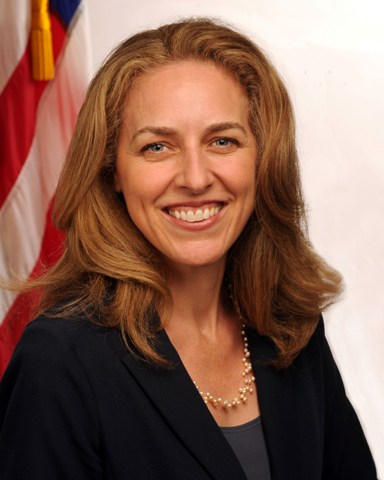HHS CTO Susannah Fox on Health Datapalooza
 Every spring, our team in the HHS IDEA Lab gears up for our biggest event of the year: the Health Datapalooza. It’s an annual celebration of the power of data that was started by my predecessor, Todd Park, in 2010. This year, we were honored to hear from an extraordinary lineup of leaders from private industry, academia and the federal government, including Vice President Biden.
Every spring, our team in the HHS IDEA Lab gears up for our biggest event of the year: the Health Datapalooza. It’s an annual celebration of the power of data that was started by my predecessor, Todd Park, in 2010. This year, we were honored to hear from an extraordinary lineup of leaders from private industry, academia and the federal government, including Vice President Biden.
I thought I’d share excerpts from three of my colleagues’ speeches, to give people a sense of the scope and depth of the discussions.
HHS Secretary Sylvia Burwell:
When this event began seven years ago, we had a mere 10 data sets around Medicare cost and quality that were openly available to the public. Today, there are more than 2,100 datasets available on HealthData.gov.
When we started releasing this information, we knew it would be useful, but we had no idea what a wide pool of resources it would be turned into.
Today, apps can connect seniors and their families with home health aides in their area, and provide user ratings for patients and care givers. We have programs that can help doctors easily set up Accountable Care Organizations together, which allow doctors to meet patients’ needs as a team. …
Over the last eight years, this Administration has made historic progress opening public data. And with it has come a sea of opportunities and innovations. Just by using the information we had stored up, we strengthened our system, by getting new data in the hands of patients, doctors, and innovators to improve care.
 HHS Secretary Sylvia Burwell highlights the intersection of health delivery reform and data innovation at her keynote speech at Health Datapalooza 2016.
HHS Secretary Sylvia Burwell highlights the intersection of health delivery reform and data innovation at her keynote speech at Health Datapalooza 2016.
And we’re not stopping there. We’re committed to openness, transparency, cyber-security, and finding common ground across this industry. We’re going to keep listening and keep supporting you however we can. …
We need you to keep innovating – to dive into this open data and put it to use in new ways. We need to make it accessible so that people can use it when they need it. And we need you to keep speaking up for this movement and fighting for progress. We’re listening, and we want to support your good work in health care and social services.
(Read Burwell’s full speech.)
Karen DeSalvo, Acting Assistant Secretary for Health and the National Coordinator for Health Information Technology:
Together, we have made so much progress in the past seven years – implementing the kinds of innovative ideas you all have made possible to make health information technology work for consumers and providers. The tripling of adoption of electronic health records means essentially everyone has a digital footprint of their care experience. And new sources and uses of health information are dramatically expanding our understanding of the potential. The data is crying out to be used – and consumers are demanding it.
We are at an exciting inflection point – one where technology, policy and demand are poised to change the way we think about, access and use health information to improve care…
We know that for health information technology to actually make the work of providers and health care systems better and easier, we have to focus on three key drivers of success –
- Use of common, federally recognized, national standards,
- Culture change around access to information – including combating data blocking,
- And building the business case for interoperability.
… Whether through the work in delivery system reform to drive a business case for interoperability or through putting out better guidance on HIPAA or through our work to require publishing APIs, the administration is leveraging our most impactful tools.
Andy Slavitt, Acting Administrator, Centers for Medicare & Medicaid Services:
At CMS, we oversee the care needs of 140 million Americans in Medicare, Medicaid, CHIP and Marketplace plans. When you microscope their lives, almost all have moderate or fixed incomes and face a fragmented, mystifying health care system at their most vulnerable time– finding a nursing home for a parent, waiting on a biopsy, traveling by bus to a dialysis center, caring for a child with a disability. All of the handoff points are where the avoidable complications kick in. …
If you have a business model which relies on silo-ing data, not using standards, or not allowing data to follow the needs of patients, pick a new business model or pick a new business.
There are a set of patient-friendly business practices everyone should follow:
- Eliminate language from contracts that slows down the ability of the system to plug and play.
- Make all your data machine readable and put it on an edge server so it can be securely and easily called to answer questions.
- Provide physicians with data on their patients in real time and with feeds into their workflow, not your portal.
- Use open APIs to be sure your technology is plug and play and with that, break the lock that early EHR decisions have placed on the physician desktop.
At this stage, there is no room for business practices that don’t match the need of patients.
(Read Slavitt’s full speech.)
Once again, the Health Datapalooza was an extraordinary opportunity to meet stakeholders from across the health care industry, from policy makers to entrepreneurs, from investors to activists. Some of my favorite moments happened far from the main stage, in meeting rooms where people were debating how best to rate doctors and hospitals, how data could inform mental health services, and how we must ensure patients’ rights to access and control their own data.
I’d like to personally invite you to check out HealthData.gov, our contribution to the public conversation about how data can be harnessed to better serve all Americans.
| This article was authored by Susannah Fox and published in the HHS Blog. It is reprinted by Open Health News under Public Domain. The original post can be found here. |
- Tags:
- Accountable Care Organizations (ACOs)
- Andy Slavitt
- Centers for Medicare & Medicaid Services (CMS)
- Data blocking
- electronic health records (EHRs)
- Health Datapalooza
- health information technology (HIT)
- Health IT
- Health IT Interoperability
- HealthData.gov
- HHS IDEA Lab
- Joe Biden
- Karen DeSalvo
- national standards
- Open Data
- publishing APIs
- Susannah Fox
- Sylvia Burwell
- Todd Park
- Login to post comments